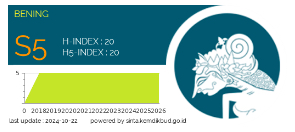ANALISIS PENGARUH CITRA MEREK, PERSEPSI HARGA DAN DAYA TARIK IKLAN TERHADAP MINAT BELI KONSUMEN PADA PRODUK AIR MINUM DALAM KEMASAN (AMDK) GALON MEREK AQUA (Studi Kasus Pada Mahasiswa Di Kota Batam)
Abstract
The emergence of buying interest coming from knowledge-related information search and product benefits. Search intensity information makes people always look for information about a product, it is a sign that the person has a high risk appetite. This study aimed to examine the effect of brand image, price perceptions and appeal of advertising on buying interest.
The population used is all Brand AQUA gallon bottled water consumers in the city is not known for sure Batam number. Sample collection using accidental sampling techniques and sampling as many as 100 with a purpose which is used among other considerations: research respondents are students as consumers Brand AQUA gallons of drinking water in the city of Batam. Primary data types. Methods of data collection using questionnaires. The analysis technique used is multiple regression.
Regression results using SPSS version 16 showed that (1) advertising appeal factor (b3 = 0.290) to be the biggest factor affecting buying interest, then the image of the brand (b1 = 0.243), while the price perception factors (b2 = 0.214) to be the lowest factor affect buying interest. (2) The results of the t test of the brand image, price perceptions and obtained sig advertising appeal. <0.05, partial positive effect of independent variables on the dependent variable is accepted. F test results for 15.366 with sig.0, 000 <0.05, the independent variables are jointly positive effect on the dependent variable is accepted. (3) The coefficient of determination indicates that the variable ability brand image, price perceptions, and advertising appeal can explain the interest of students as consumers buy bottled water brand AQUA gallons of 30.3%.
Full Text:
PDFReferences
Fandy Tjiptono dan Gregorius Chandra. 2005. Service, Quality, and Satisfaction. Andi. Yogyakarta.
_______. 2007. Aplikasi Analisis Multivariate dengan Program SPSS. Badan Penerbit Universitas Diponegoro. Semarang
_______. 1997. Pengukuran Tingkat Kepuasan Pelanggan. Rineka Cipta. Jakarta.
Kotler, Philip dan AB. Susanto. 2001. Manajemen Pemasaran Indonesia. Buku 2. Salemba empat. Jakarta.
Kotler, Philip. 1997. Prinsip-Prinsip Pemasaran. Erlangga. Jakarta.
Parasuraman, A., Zeithalm, V., dan Berry L., 1988. SERVQUAL: “A Multiple item Scale for Measuring Consumer Perceptions of Service Quality”. Journal of Retaliling.
Singgih Santoso. 2004. SPSS Statistik Parametrik. Elek Media Komputindo.
Jakarta.
Sugiyono. 2004. Metode Penelitian Bisnis. Cetakan Kedelapan. CV Alfabeta. Bandung.
_______. 1992. Journal of Marketing: “Reassessment of Expectations as a Comparison Standard in Measuring Service Quality: Implications for Further Research”.
_______. 2000. Manajemen Pemasaran . Jilid 2. Bumi Aksara. Jakarta. Lamb, Charles. W. et.al. 2001. Pemasaran. Buku I Edisi Pertama. Penerbit Salemba Empat. Jakarta.
Johanes Supranto. 1997. Metode Peramalan Kuantitatif Untuk Perencanaan Ekonomi dan Bisnis. Rineka Cipta. Jakarta.
Rambat Lupiyoadi. 2001. Manajemen Pemasaran Jasa. Salemba Empat. Jakarta
DOI: https://doi.org/10.33373/bening.v1i2.792
Refbacks
- There are currently no refbacks.
ISSN Barcode:

Ciptaan disebarluaskan di bawah Lisensi Creative Commons Atribusi 4.0 Internasional.
 Jurnal Bening
Jurnal Bening













